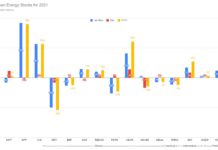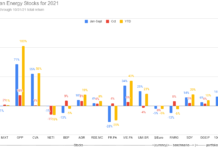John Petersen
Short sellers are the bane of every securities lawyer who represents small public companies. In over thirty years of practice I’ve never advocated a short sale because I hate the idea of profiting from someone else’s misery. Based on recent quarterly reports filed by my short-list of pure play energy storage companies, which includes Tesla Motors (TSLA) as an honorary member, I’m compelled to break with tradition and suggest a paired trade that involves a short sale of Tesla coupled with a long purchase of Exide Technologies (XIDE).
The following table summarizes the year-to-date and quarter-to-date performance of the short-list companies. On a year-to-date basis, Tesla has been a runaway success while Exide languished. For the reasons discussed below, that dynamic is sure to change over the coming year.

Most of us know that money managers, analysts and investors tend to follow the herd without asking whether the herd’s behavior is rational. Even a simplistic comparison of business fundamentals and market realities shows just how irrational the herd has become over the last year as electric vehicle hype reaches the peak of inflated expectations.
The following table is complex and I apologize for that, but it highlights the huge disconnects between market values and financial statement values that are common in the sector. To keep things comparable I started with data in the most recent quarterly reports filed by the short list companies and adjusted for financing transactions that occurred after the last balance sheet date. The columns with gold headers are business fundamentals derived from financial statements. The columns with green headers are market driven variables.

Why I Would Short Tesla – It doesn’t take much market experience to know that companies cannot long sustain market capitalizations of almost twelve times book value, but that’s exactly what Tesla is doing. When you drill down into the disclosures in Tesla’s most recent quarterly report, you’ll find that $88 million of its $202 million in working capital is set aside as restricted cash for capital investments in facilities construction, which leaves a paltry $114 in real working capital to cover anticipated operating losses and the pre-production costs for the 2012 introduction of its Model S sedan.
Any way you cut it, Tesla does not have enough cash to support its business for another year and it’s already tapped Panasonic and Toyota. That means Tesla will have to go into the financial markets for additional cash – lots of additional cash. While stock market investors frequently ignore financial statement fundamentals when making investment decisions, I’ve met very few professionals with a similarly blasé attitude. The probability that hundreds of millions in new capital will be available to Tesla at anywhere close to a 1,200% premium to book value is remote beyond reckoning and it’s a virtual certainty that substantial transactions with independent investors will not happen at anything close to the current market price.
Since the market can stay irrational longer than many of us can stay solvent, the safest way to play the likely price collapse will be a long-dated out of the money put option. For purposes of tracking the performance of this long-short pair over time, I’ll use the publicly traded January 2012 $25 put, which last traded for $6. The short won’t be profitable unless Tesla’s price falls below $19, but I still like the risk/reward ratio.
Why I Would Buy Exide – I’ve discussed Exide at length in other articles including “Valuation Primer For Energy Storage Companies – Lesson #1.” The short story is that it’s taken Exide five years to emerge from Chapter 11 and restructure its manufacturing operations to a point where consistent long-term profitability is likely. Exide’s current price earnings ratio is significantly below normal valuations of 15 to 18 times earnings and its prospects for rapid and sustained growth over the next five years are outstanding due to technological changes like stop-start idle elimination that are sweeping the automotive sector and will improve margins in both its OEM and after-market replacement business. While the financial analysts that follow Exide have an average price target of $10, my sense is that a price toward the high end of the $10 to $15 range is more likely.
Why Valence Terrifies Me – Valence Technologies (VLNC) has been around for years and is making significant progress in its efforts to commercialize a good lithium-ion battery technology. For several years it has depended on the commitment and generosity of a principal stockholder to keep the doors open. Currently Valence has a $7.3 million working capital deficit and a whopping $75.3 million stockholders equity deficit. As long as the principal stockholder is willing to continue providing additional financing on terms that are little more than gifts to the public stockholders, Valence stands a chance. If it is forced to go to unrelated investors that are unwilling to be sugar daddies, the likelihood that it will be able to raise over a hundred million dollars of new capital at prices that bear any relation to the current market price is less than slim. While I have often been forced to rely on the kindness of strangers, hope is not an investment strategy.
Disclosure: Author is a former director of Axion Power International (AXPW.OB) and has a substantial long position in its common stock.







